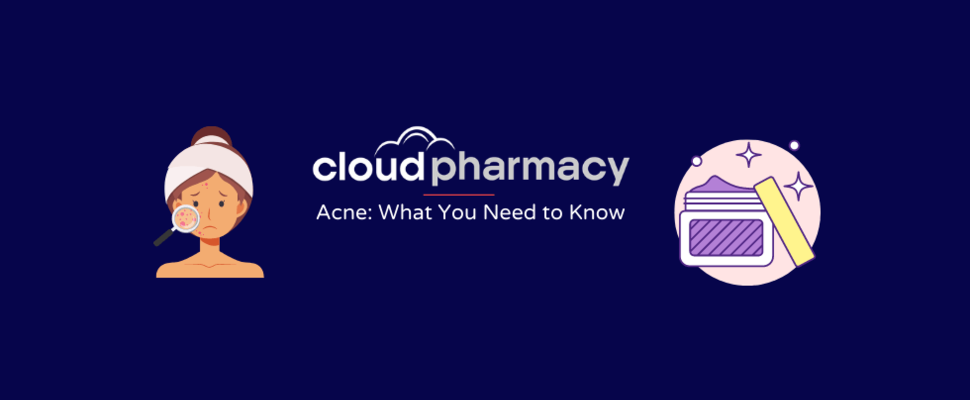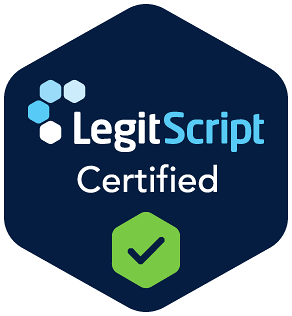How To Get Rid of Acne
ACNE! The dreaded skin condition that so many of us suffer from. It can impact our mental health dramatically and more often than not can be an inconvenience for us. This week we discuss all the basics you need to know regarding acne.
What is Acne?
Acne is a skin condition that occurs when your hair follicles become clogged with oil and dead skin cells. It causes whiteheads, blackheads or pimples. Acne is most common among teenagers, though it affects people of all ages. Primarily, it is most noted on the face however you can get acne all over your body on places such as your chest and back. About 95% of people aged 11 to 30 are affected by acne to some extent. Acne is most common in girls from the ages of 14 to 17, and in boys from the ages of 16 to 19. Acne typically can appear in waves, and gradually gets better as you grow older.
What Causes Acne?
There are four main causes of acne; excess sebum production, bacteria, inflammation, and blocked follicle pores.
Sebaceous glands are tiny glands found near the surface of your skin which are attached to hair follicles, these are small holes in your skin that an individual hair grows out of. These glands produce sebum to help lubricate the skin and stop it from drying out. In acne, the glands begin to produce too much sebum. The excess sebum mixes with dead skin cells and both substances form a plug in the follicle.
What Triggers Acne?
There are a lot of triggers that can either trigger acne or make it worse, the most common being:
Hormonal changes - such as androgens during puberty can trigger acne but also during the midlife of adults, particularly women
Diet - Carbohydrate rich foods like bread, crisps, and bagels can lead to acne. Similarly junk food can be known to worsen acne.
Medications - such as corticosteroids, lithium, and testosterone can also cause acne.
Stress - Whilst it hasn't been known to trigger acne directly, it has been documented to worsen acne if someone already has it.
What are the Different Types of Acne?
There are roughly six different types of spots you will see as a result of acne:
Papules - Papules occur as hard, clogged pores that are tender to the touch. The skin around these pores is usually pink.
Black heads - Blackheads occur when a pore is clogged by a combination of sebum and dead skin cells. The top of the pore stays open, even though the rest is clogged. This results in the black colour seen on the surface.
White heads - Whiteheads can also form when a pore gets clogged by sebum and dead skin cells. But unlike with blackheads, the top of the pore closes up. It looks like a small bump protruding from the skin which is white.
Pustules - Pustules can also form when the walls around your pores break down. Unlike papules, pustules are filled with pus. These bumps come out from the skin and are usually red in colour with yellow or white heads on top.
Cysts - These large red or white bumps are often painful to the touch. Cysts are the largest form of acne, and their formation usually results from severe infection. This type of acne is also the most likely to scar.
Nodules - Nodules occur when clogged, swollen pores endure further irritation and grow larger. Unlike pustules and papules, nodules are deeper underneath the skin.
How to Get Rid of Acne
Whilst acne can range from mild to very severe cases. There are a plethora of treatments, interventions, and lifestyle choices you can stick to to help get rid of acne and prevent it from happening in the future. Acne medications work by reducing oil production and swelling or by treating bacterial infection. With most prescription acne drugs, you may not see results for four to eight weeks. It can take many months or years for your acne to clear up completely. You will no doubt have tried every Clearasil, Garnier, and Neutrogena product you can buy on the shelf. If this has provided no relief, then it may be time to move onto stronger treatment options.
Treatment for Acne
Typical treatment for mild to moderate acne normally just deals with topical creams that either contain benzoyl peroxide (Acnecide 5% Gel), steroids, or antibiotics. For more severe cases of acne systemic treatments of antibiotics and steroids will be used. Sometimes the contraceptive pill or isotretinoin can be used to help with severe acne in patients.
Retinoids: Drugs that contain retinoic acids or tretinoin are often useful for moderate acne. Topical retinoids work by removing dead skin cells from the surface of the skin, which helps prevent them building up within hair follicles. However, they can increase your skin's sun sensitivity. They can also cause dry skin and redness, especially in people with skin of colour. Isotrexin and adapalene (Differin) are common examples.
Benzoyl Peroxide: It has antiseptic properties and works by reducing the number of bacteria on the surface of the skin. It also helps to reduce the number of whiteheads and blackheads, and has an anti-inflammatory effect. It also makes your face more sensitive to sunlight, so avoid too much sun and sources of ultraviolet (UV) light (such as sunbeds), or wear sun cream. Benzoyl peroxide can have a bleaching effect, so avoid getting it on your hair or clothes.
Azelaic acid: Azelaic acid (Skinoren 20% Cream) is often used as an alternative treatment for acne if the side effects of benzoyl peroxide or topical retinoids are particularly irritating or painful - it works by getting rid of dead skin and killing bacteria.
Acne Skin Care
You can try to avoid or control mild or moderate acne with basic skin care and other self-care techniques:
The sun can worsen the discolouration that sometimes lingers after the acne has cleared. Some acne medications make you more susceptible to sunburn – check with your local pharmacist to see if your medication does. Make sure to shower after strenuous exercise or heat, the excess sweat can clog up pores and make you more prone to spots. If you do have spots, make sure you do not try to pop them as this can cause infection and potentially scar the tissue around it.
Best Products For Acne
For mild to moderate acne, benzoyl peroxide is incredibly effective at reducing the appearance of acne, acnecide 5% gel is available, it can also be used with oral antibiotics for more severe cases. Topical retinoids as mentioned earlier in the article are also effective - examples include Isotrexin. However, for more serious cases oral antibiotics such as lymecycline can be used.
Acne Scarring Treatment
Acne can be troubling at the time, but for some people, it can also leave acne scars that last a long time and can cause a lot of upset. Luckily for you, there are several ways you can treat acne scars with fantastic results. Some of the main treatments include chemical peels, dermabrasion, and laser techniques.
















